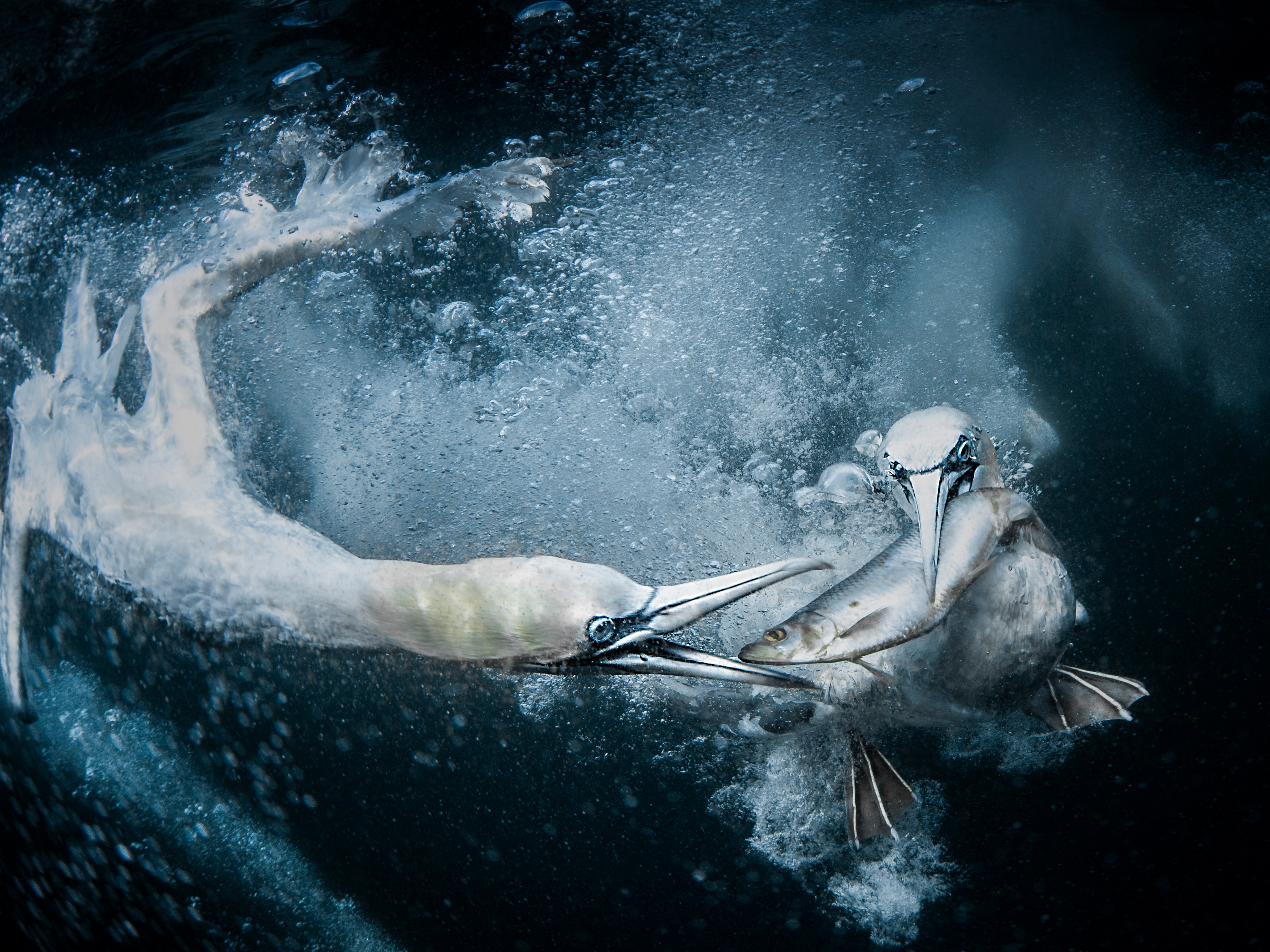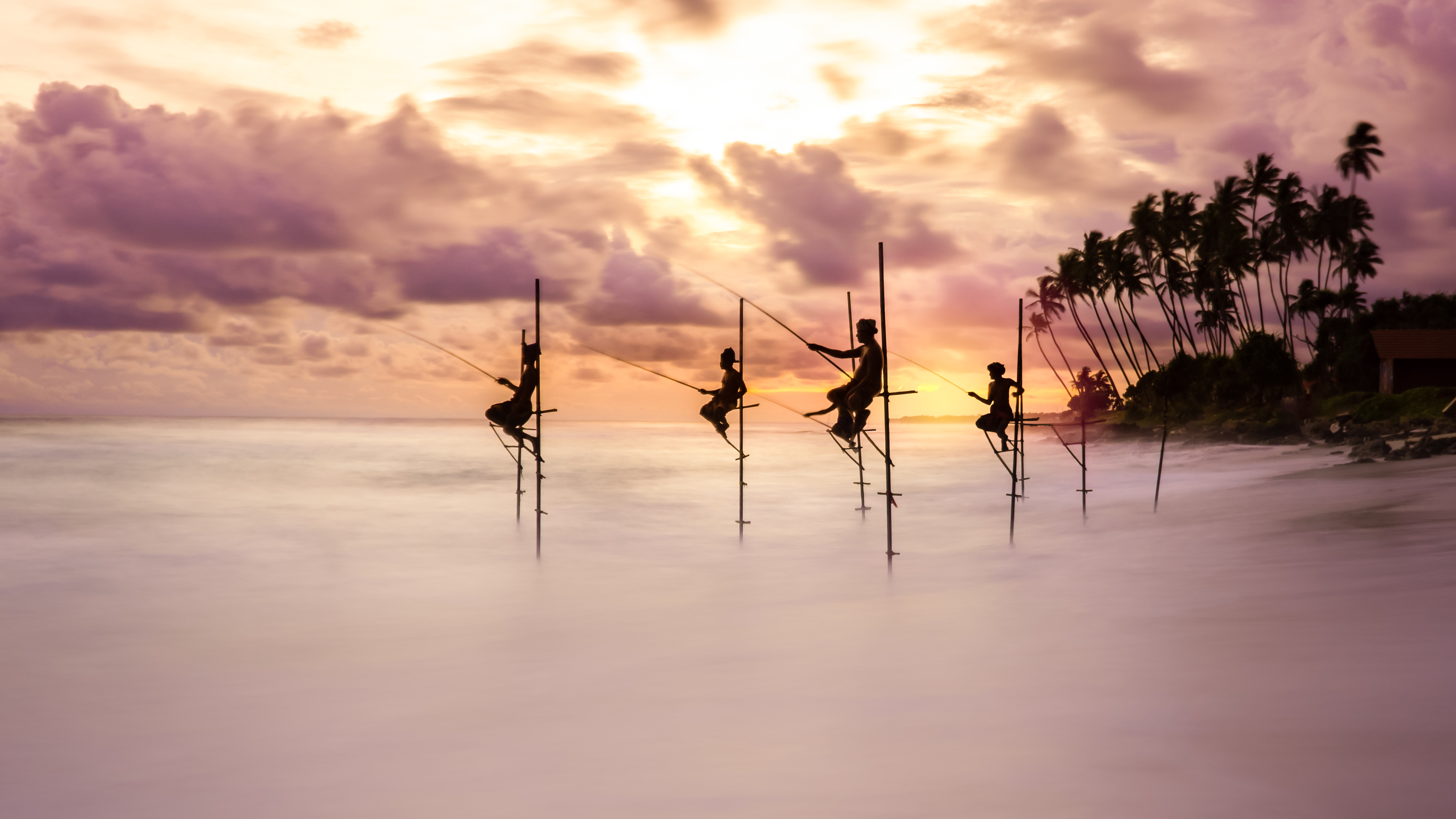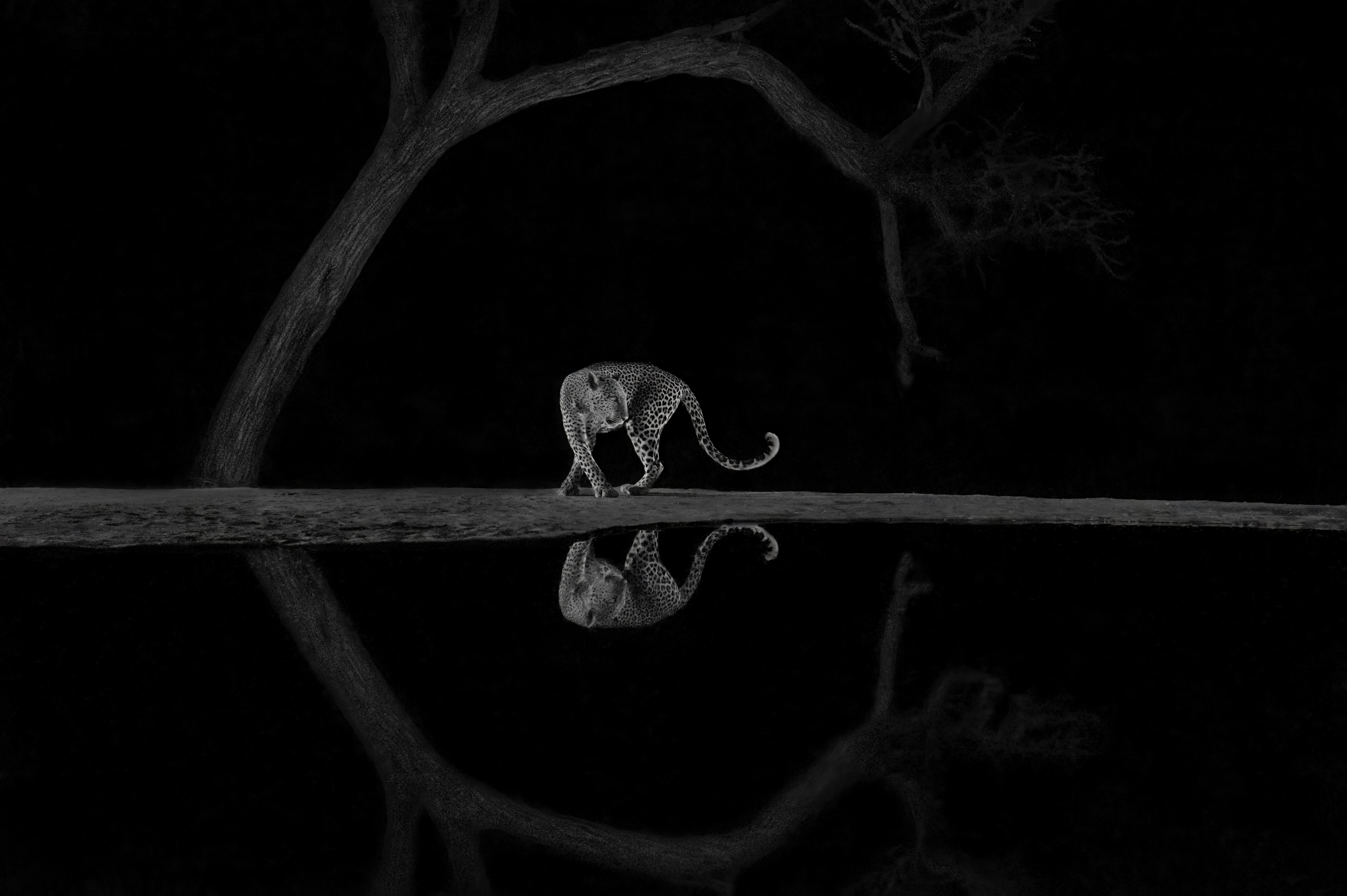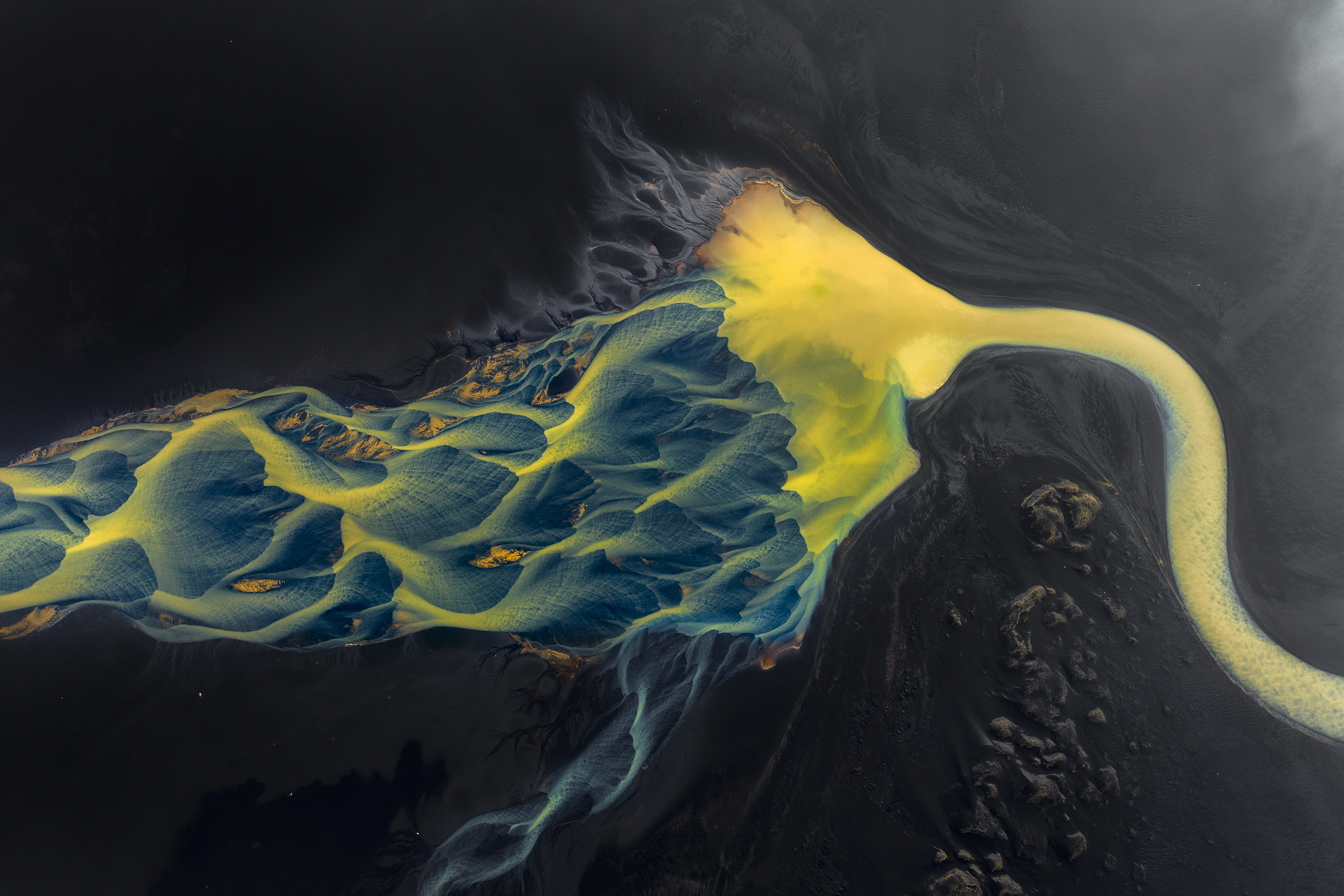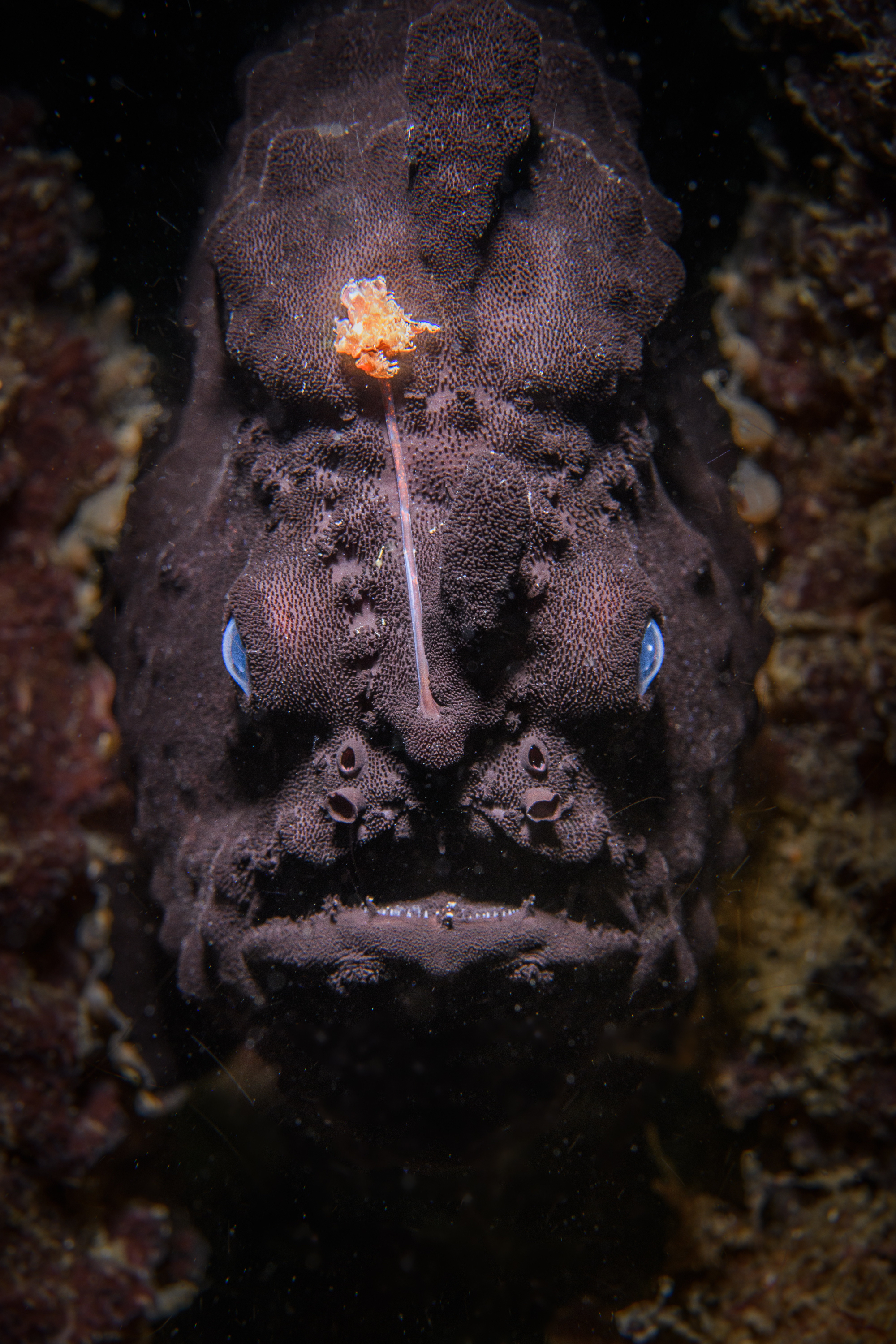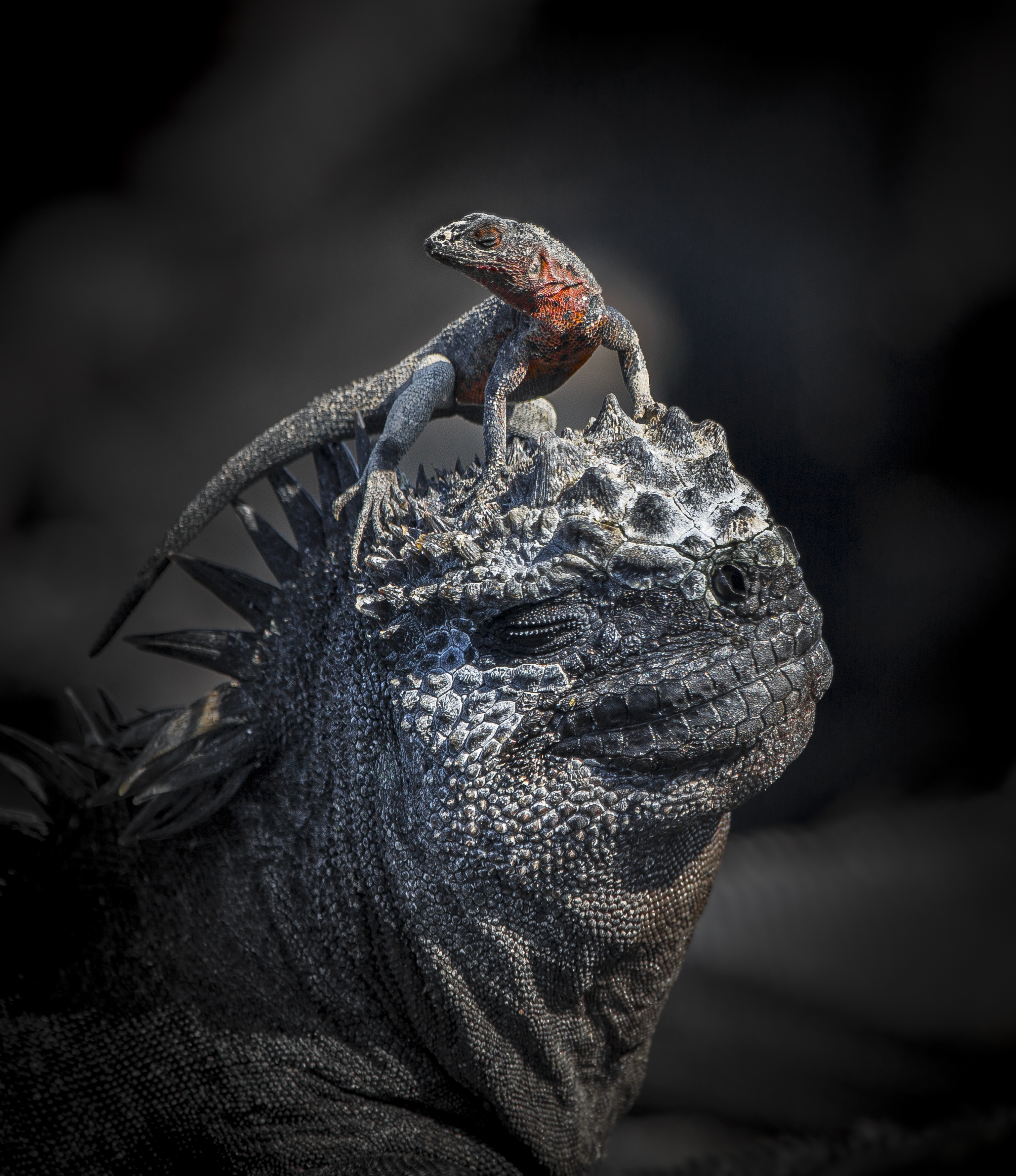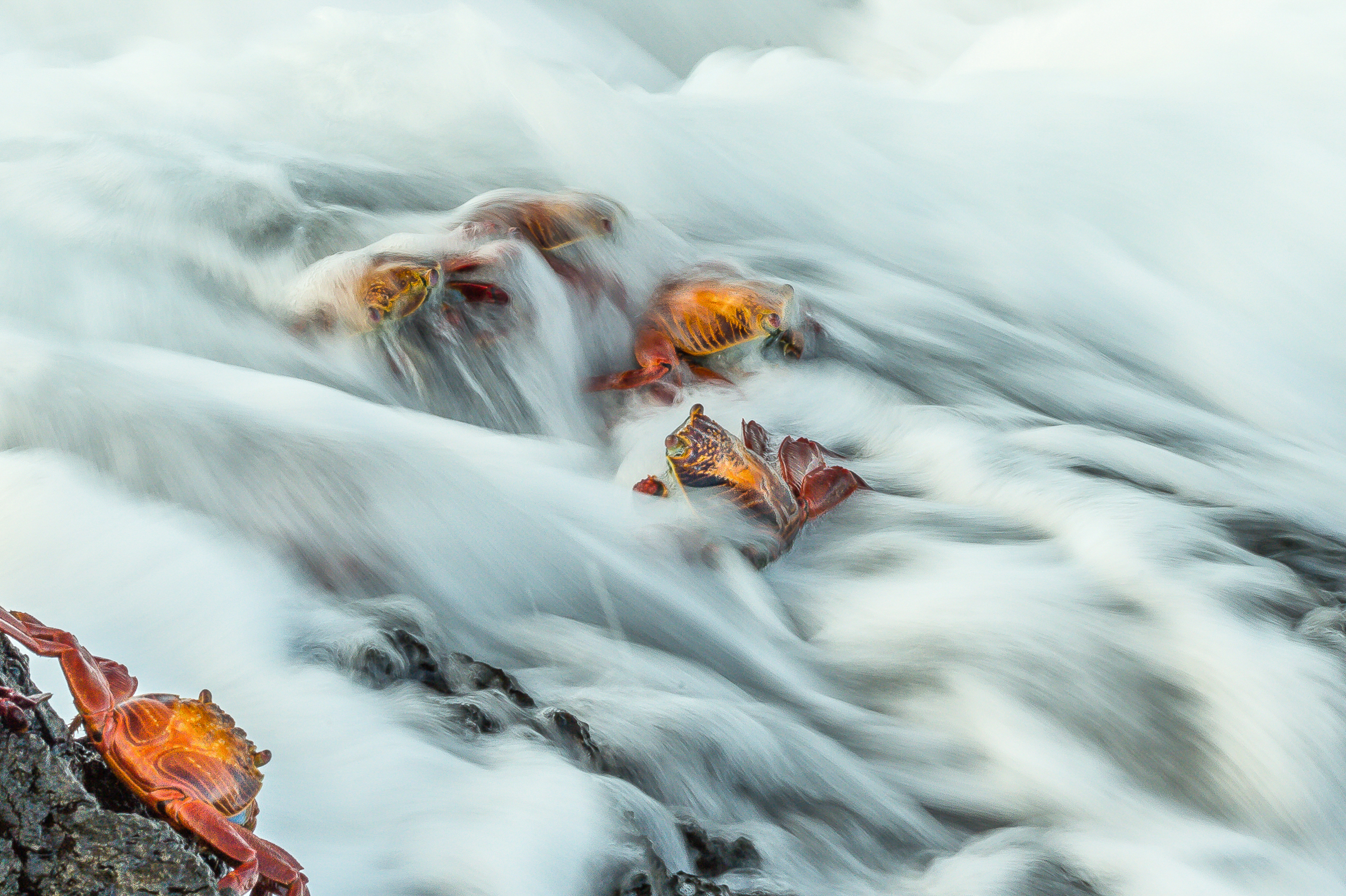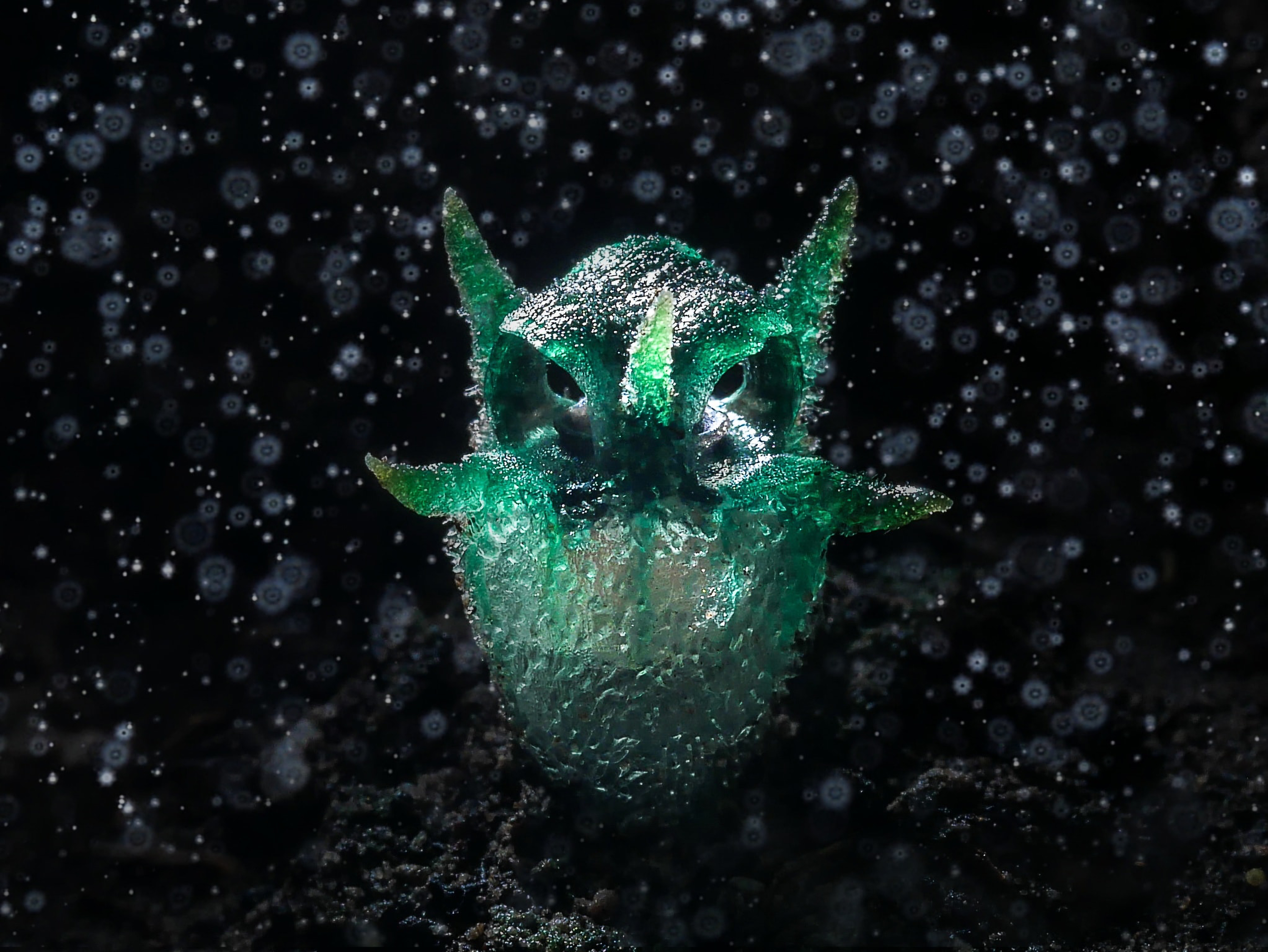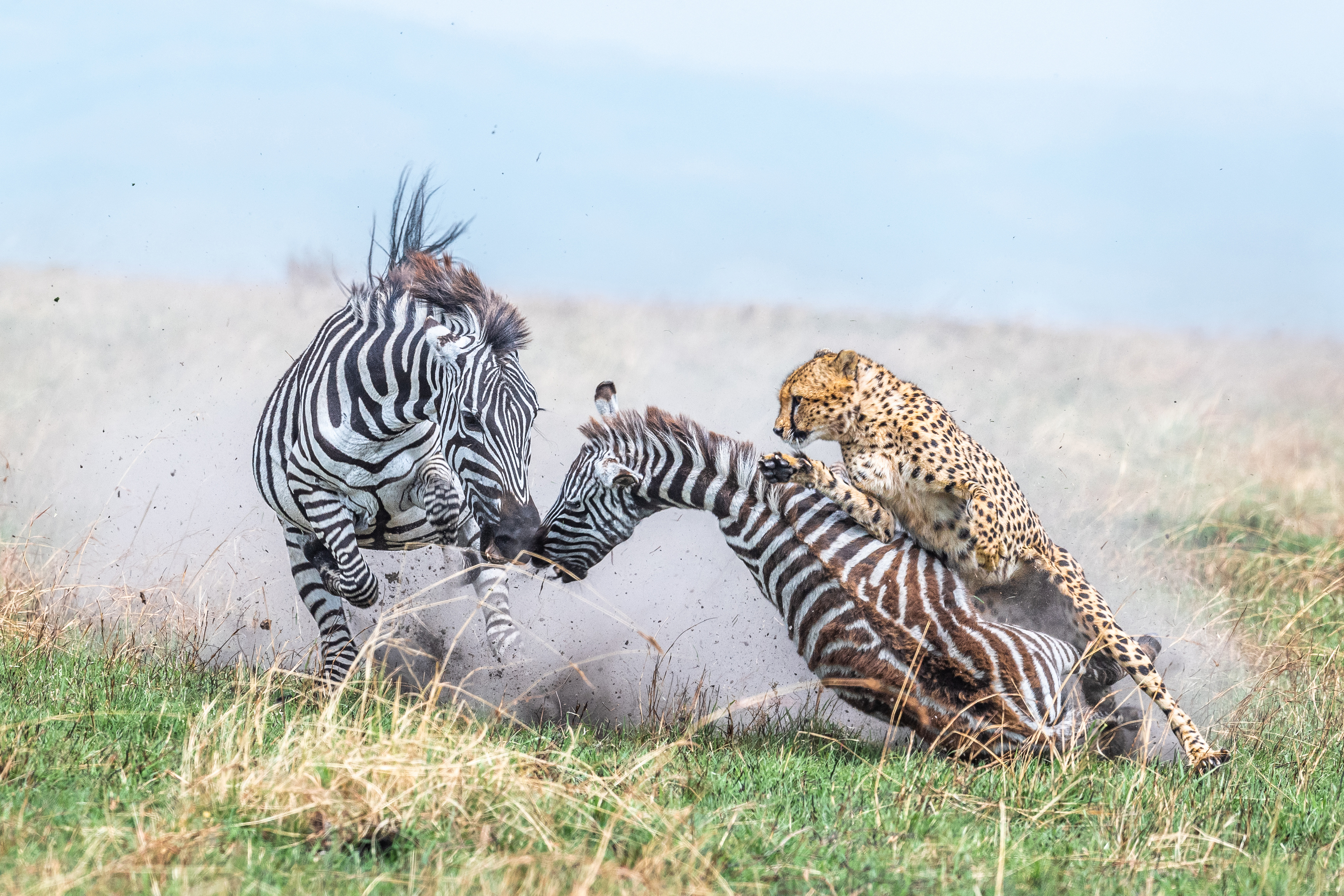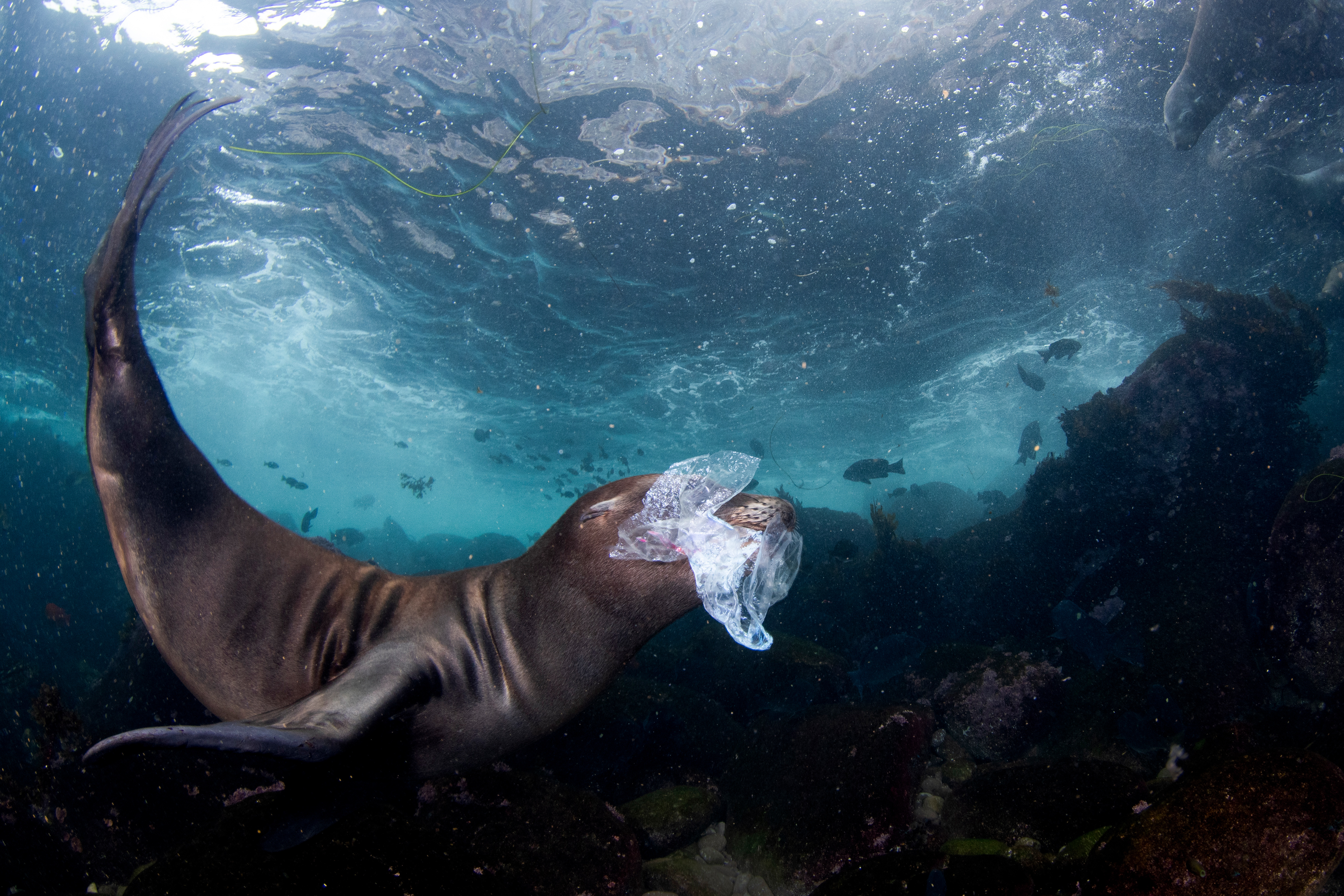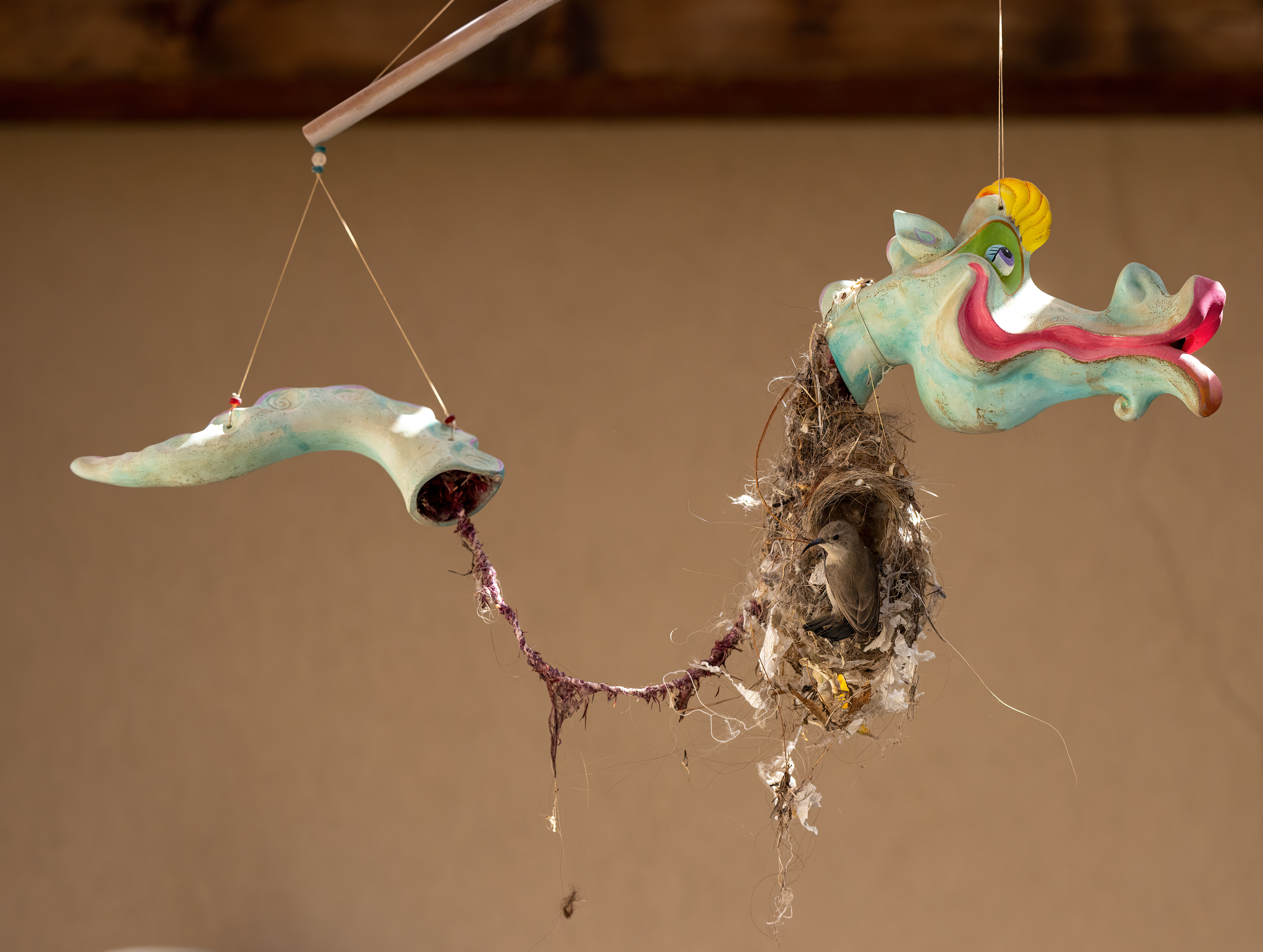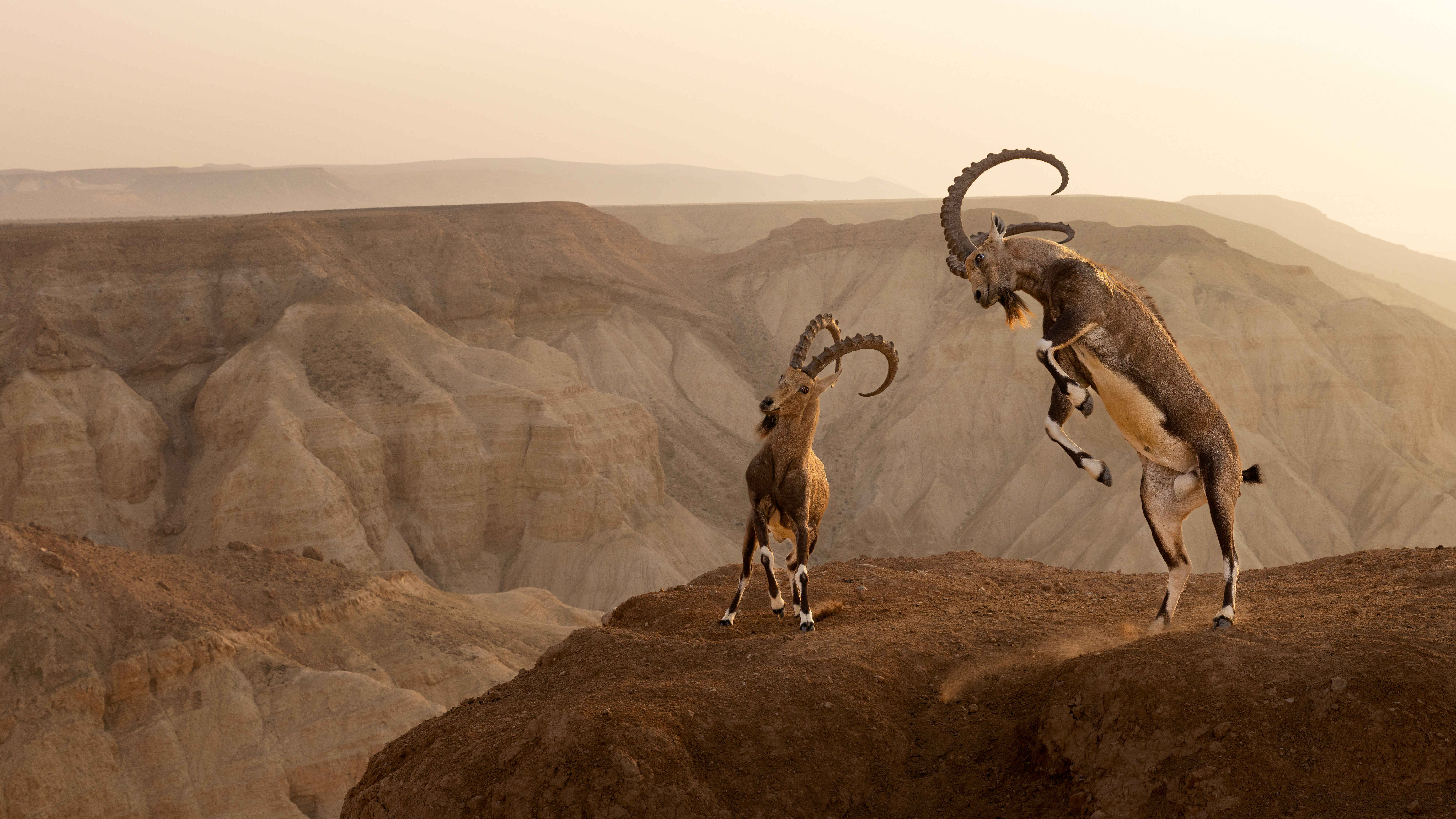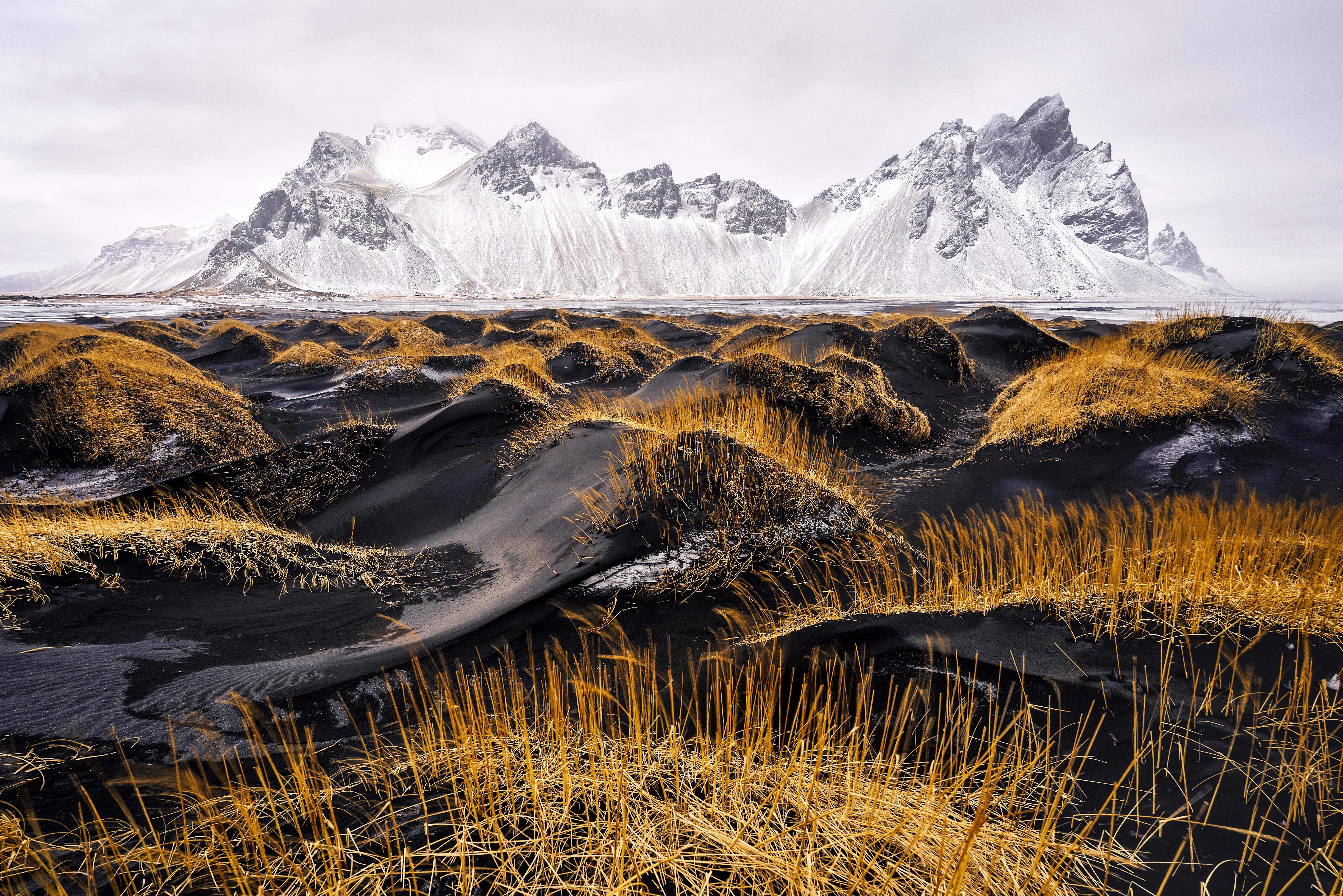Behaviour - Birds - Gold and Grand Prize Winner |
Tracey Lund, UK |
Two gannets under the water
"Taken whilst on holiday in Shetland, sat on the side of a RIB. The hired DSLR camera in the waterproof housing was attached to polecam system and lowered into the water. Thousands of gannets were in the sky above us and then started to dive into the sea after locally-caught fish. An unbelievable spectacle to witness, let alone photograph. I took 1800 images on that day but only had 2 that I could use." (Image credit: © Tracey Lund) The World Nature Photography Awards always produces an abundance of exceptional photographs, and this year has been no exception. Some of the best wildlife cameras have been used to capture nature in all its beauty, from portraits of exotic animals to the humble mushroom the competition brings together the best photography from all over the world.
The title of World Nature Photographer of the Year 2024 was awarded to Tracey Lund from the UK, for her image ‘Underwater gannets’, an underwater image that depicts two hungry gannets diving for their meal. Taken whilst on holiday off of the coast of Shetland, UK, Lund used a DSLR in an underwater housing attached to a pole cam, all while sitting on the edge of a boat. The image won gold in the Behaviour - Birds category, one of 14 category winners entered into the grand prize draw.
Speaking on the moment of capture, Lund says, "Thousands of gannets were in the sky above us and then started to dive into the sea after locally caught fish. An unbelievable spectacle to witness, let alone to photograph. I took 1800 images on that day but only had 2 that I could use".
Drawn from a pool of thousands of entries submitted from over 6 continents, Lund's winning image shows exceptional patience and technical skill, awarding her the prestigious title and the $1,000 prize money.
The winners of the 13 other categories and their images can be seen below:
People and Nature - Gold |
Ioannis Pavlos Evangelidis , Greece |
Traditional stilt fishermen try their luck at sunset
"Traditional stilt fishermen try their luck with the changing tide at sunset in Koggala, Sri Lanka. It showcases the water movement in contrast to the stillness of the fishermen. Traditional, artisanal fishing methods like these, used for subsistence do not pose significant threats to the ocean’s natural resources and on the contrary, makes local communities stakeholders to the ocean’s health." (Image credit: © Ioannis Pavlos Evangelidis ) Black and White - Gold |
Richard Li, USA |
Leopard
"In a hidden shelter in Kenya, I patiently waited until late into the night to capture the graceful moment when a leopard approached the pond, elegantly turning around." (Image credit: © Richard Li) Nature Art - Gold |
Miki Spitzer, Israel |
Blue watery veins, glacial braids, and golden sediment
"Icy blue watery veins, shimmering glacial braids and glistening golden sediment come together to provide a delightful mirage for the human eye. Is it a beautiful elephant with a flowing lion's mane? Or a lion's head with luxurious flowing braids? It's up to you and your imagination. This is the gift of Iceland's magical topography." (Image credit: © Miki Spitzer) Animal Portraits - Gold |
Nicolas Remy, Australia |
A black frogfish (or black anglerfish in Australia)
"I was aware of this black anglerfish living in a reef that I regularly dive and had in mind a portrait that would emphasise the character of this ambushed predator." (Image credit: © Nicolas Remy) Behaviour - Amphibians and Reptiles - Gold |
John Seager, UK |
A lava lizard standing on a marine iguana
"I took this image during a trip to the Galápagos Islands. The Islands are full of iconic marine iguanas and lava lizards. This was the only time I saw a lizard basking on the head of an iguana, both obviously enjoying the occasion with beatific smiles!" (Image credit: © John Seager) Behavior - Invertebrates - Gold |
Bill Klipp, USA |
Sally light-foot crabs
"It was late afternoon in Puerto Egas, Santiago Island, Galapagos and the colorful Sally Light Foot Crabs were returning to the lava-rock-encrusted shoreline. I knew that when a wave came in, the crabs would lock down, holding on tight so they did not get washed away, so I set up my tripod and pre-focused on the rocks setting a very slow shutter speed to blur the moving water while keeping the stationary crab sharp." (Image credit: © Bill Klipp) Plants and Fungi - Gold|
Chatree Lertsintanakorn, Thailand |
Thismia thaithongiana
"Once, a photographer whom I respected, Suchat Chanhomhuan, took me to Doi Hua Mot Mountain, Umphang Wildlife Sanctuary, Tak Province, Thailand, to meet a kind of living organism with a strange shape that looked like an owl. The scientific name of this plant is Thismia thaithongiana." (Image credit: ©Chatree Lertsintanakorn) Behavior - Mammals - Gold |
Alex Brackx, Belgium |
Mother zebra and her foal being attacked by a cheetah
"That morning, we decided to follow four cheetahs on the hunt. We followed them for hours. We passed herds of topis, gazelles, and zebras. We knew something was going to happen. When, five hours later, our Maasai guide whispered, ‘they are going for the zebras,’ I was convinced they would attack the topis or gazelles dotted across the valley. Seconds later, the cheetahs burst into a small group of zebras. One cheetah ran towards us, clinging onto a foal. In those seconds, I took this picture of the mother zebra launching a last attempt to push her foal away from the attacking cheetah. She failed. I will remember those last seconds for the rest of my life." (Image credit: © Alex Brackx) Nature Photojournalism - Gold |
Celia Kujala, USA |
Sea lion pup
"Play is very important in the development of California sea lion pups and everything in their environment is a potential toy. It is not uncommon to observe them playing with rocks, seaweed and starfish. Sadly, it is becoming much more common to see them playing with another type of toy: a dangerous toy. Human garbage is entering the ocean and arriving at their remote, uninhabited homes on ocean currents. On this day, in the span of two dives, I was able to collect six pieces of garbage that they were playing with, including the one pictured, and take them out of the ocean. It is extremely sad to see what our waste is doing to them and even though it is hard to make changes, we must do better. This image was taken at Coronado Islands, Baja California, Mexico." (Image credit: ©Celia Kujala) Urban Wildlife - Gold |
Roy Wiesner, Israel |
Female Sunbird
"A nest built on a half-broken dragon mobile hanging in the porch of a residential home, constantly moving in all directions by the wind. I watched for hours as the male and female flew in turns to add a twig, feather, hair and even clothes tags that they collected nearby to build this perfectly shaped nest that can hold several eggs. They flew back and forth for days, mission driven, unfazed by the humans sitting nearby. Finally, the female was content and agreed to pose at the entrance to her new home. Even the dragon couldn’t but smile." (Image credit: © Roy Wiesner ) Underwater - Gold |
Andy Schmid, Switzerland |
A female orca splitting a herring bait ball
"A female orca splitting a herring bait ball while diving through it to get one, shot from underneath while freediving. Every winter, enormous schools of herring migrate from the open ocean into the fjords of Northern Norway and attract large numbers of big predators such as orcas and humpback whales. Witnessing orcas feeding on herring using the so-called carousel feeding technique is very exciting but not easy to capture due to various factors: limited light and visibility, fast-paced action plus cold surface and water temperature. Being able to freedive and capture the action on an ongoing feeding frenzy in these conditions is difficult but I managed to create a series of photos I had never dreamt of capturing." (Image credit: © Andy Schmid) Animals in their Habitat - Gold |
Amit Eshel, Israel |
Nubian Ibex
"Nubian Ibex battle on the edge of the cliff with the beautiful backdrop of Zin Desert mountains. During the rut males fur becomes darker in areas such as front chest and legs, the neck muscles thicken and they fight for the right to breed with the females. The battle usually begins with a display of the horns while tilting the head to the sides. In the second stage, if a fight develops, the males push each other as they both turn their heads and the base of their horns towards each other. If the opponents are equal, more vigorous fighting ensues as the males stand on their hind legs and strike each other. In this mode, the collisions of the horns make a loud sound that can be heard far and wide. Despite these violent fights, there is no damage to the skull, but sometimes horns are broken. Courting males seldom feed and expend much energy on fighting or mating, sometimes resulting in severe deterioration of their physical condition. I envisioned and dreamed about such kind of a image for many years since I started following and photographing the Nubian Ibex herd that live in this stunning environment. I always wanted to capture 2 adult males fighting in that exact spot by using a wide angle lens and include the beautiful desert habitat but I have never had a chance to do it until that special morning when I spotted these adults males just after sunrise on the cliff above me as they just started battling. I wanted to include the Zin valley and mountains in the image so I knew I will have to hike up and and position myself above them with the stunning backdrop. I made my way up the cliff In a careful detour trying not to spook them and slowly positioned myself closer and closer to them in order to achieve the composition and angle of sunlight I envisioned in my mind." (Image credit: © Amit Eshel) Planet Earth’s Landscapes and Environments - Gold |
Ivan Pedretti, Italy |
Beach and Vestrahorn mountain
"Winter in Stokksnes, Iceland. The beach with its black sand and the majestic mountain called Vestrahorn, I love the contrast in colors between the white mountains and the black dunes with yellow grass."
(Image credit: © Ivan Pedretti ) The Gold prize category winners are an exceptional example of wildlife and nature photography, a big congratulations to all of the winners.
Adrian Dinsdale, co-founder of the WNPAs says, “Our winners never fail to take our breath away with their stunning images. As always, it’s such a joy to see the amazing caliber of entries into the awards".
A full list of winners and runners-up can be found on the World Photography Nature Awards website , along with details on how to enter the World Photography Nature Awards 2025 which has now opened for calls.
